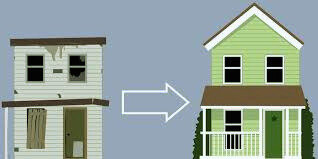Introduction:
Flipping houses can be an exciting and lucrative venture, especially for those eager to dive into real estate without a hefty upfront investment. If you’re a beginner looking to flip houses with little to no money down, this guide will provide you with essential tips and strategies to get started on your journey.
Understanding House Flipping
Flipping houses involves purchasing a property, renovating it, and then selling it for a profit. While many people assume that substantial capital is required to start, there are creative ways to enter the market with minimal financial investment.
Step 1: Educate Yourself
Before diving in, it’s crucial to understand the fundamentals of house flipping. Read books, listen to podcasts, and follow real estate blogs. Key concepts to grasp include:
- Market Trends: Understanding the local real estate market is vital.
- Renovation Costs: Familiarize yourself with typical costs associated with renovations.
- Investment Strategies: Learn about different strategies, such as wholesaling or partnering with investors.
Step 2: Find Your Niche
Deciding on your niche can help narrow your focus. Consider:
- Target Location: Look for neighborhoods with rising property values or those undergoing revitalization.
- Property Type: Choose whether you want to focus on single-family homes, condos, or multi-family units.
- Style of Renovation: Will you be making cosmetic changes or tackling major structural work?
Step 3: Leverage Creative Financing
Flipping houses with no money down often requires creative financing options. Here are some strategies to consider:
1. Wholesaling
Wholesaling involves finding properties below market value, securing a contract, and then selling that contract to an investor for a fee. This method requires little to no money and can provide quick cash flow.
2. Partner with Investors
Look for experienced investors who may be willing to partner with you. You can contribute your time and effort in managing the flip while they provide the capital.
3. Use Hard Money Lenders
Hard money lenders provide short-term loans based on the value of the property rather than your creditworthiness. These loans often have higher interest rates but can be a viable option for financing your first flip.
4. Seller Financing
Some sellers may be willing to finance the property directly, allowing you to make monthly payments instead of paying the full price upfront. This can be particularly appealing if the seller is motivated to sell quickly.
Step 4: Build a Strong Network
Networking is crucial in the real estate business. Connect with:
- Real Estate Agents: They can provide valuable market insights and potential leads on properties.
- Contractors: Establish relationships with reliable contractors who can help with renovations.
- Investors and Flippers: Join local real estate investment groups to share knowledge and opportunities.
Step 5: Find the Right Property
Finding the right property is essential for a successful flip. Look for:
- Distressed Properties: These homes often sell for lower prices and may require renovations.
- Foreclosures or Short Sales: These properties can offer significant discounts.
- Motivated Sellers: Individuals eager to sell quickly may be more willing to negotiate a lower price.
Step 6: Plan Your Renovation
Once you’ve secured a property, create a detailed renovation plan. Consider:
- Budgeting: Set a realistic budget and stick to it. Unexpected costs can arise, so leave some wiggle room.
- Prioritizing Upgrades: Focus on improvements that will yield the highest return on investment, such as kitchen and bathroom remodels.
- DIY Where Possible: If you have the skills, consider handling minor renovations yourself to save money.
Step 7: Market Your Property
When the renovations are complete, it’s time to market your flipped property effectively. Use:
- Professional Photography: High-quality images will attract potential buyers.
- Social Media: Leverage platforms like Instagram and Facebook to showcase your property.
- Real Estate Listings: List your property on popular real estate websites to reach a wider audience.
Conclusion
Flipping houses for beginners with no money down is challenging but entirely possible with the right strategies. By educating yourself, leveraging creative financing, building a strong network, and finding the right properties, you can embark on a successful house-flipping journey. Remember, persistence and continuous learning are key to thriving in the real estate market.
Call to Action
Ready to start flipping houses? Join our community of aspiring investors and gain access to exclusive resources, tips, and support. Subscribe to our newsletter for the latest insights and trends in real estate investing!








